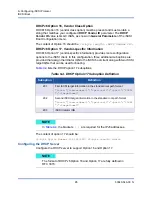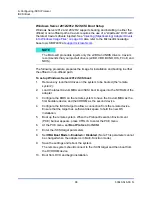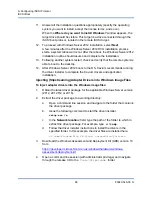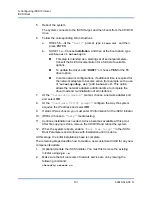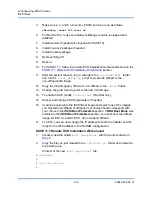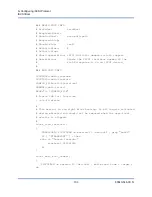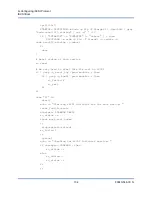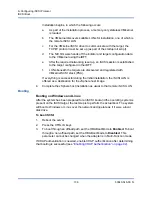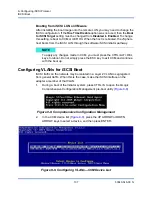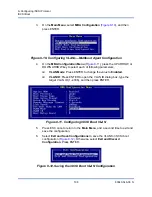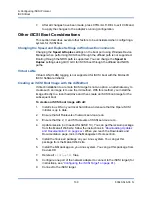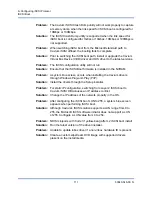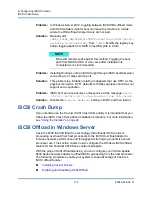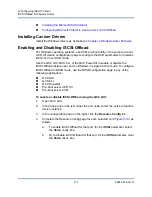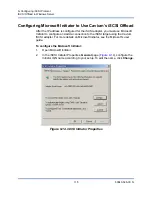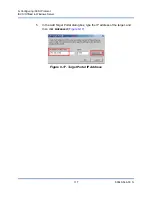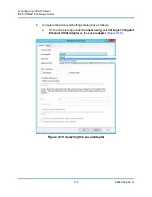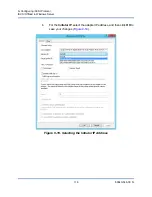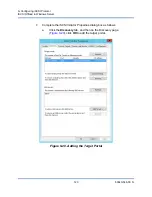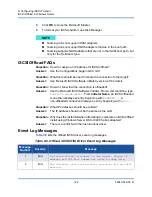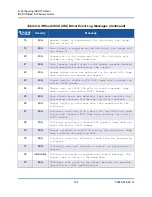
9–Configuring iSCSI Protocol
iSCSI Boot
109
83840-546-00 N
7.
After all changes have been made, press CTRL+ALT+DEL to exit CCM and
to apply the changes to the adapter’s running configuration.
Other iSCSI Boot Considerations
This section describes several other factors to be considered when configuring a
system for iSCSI boot.
Changing the Speed and Duplex Settings in Windows Environments
Changing the
Speed & Duplex
settings on the boot port using Windows Device
Manager when performing iSCSI boot through the offload path is not supported.
Booting through the NDIS path is supported. You can change the
Speed &
Duplex
settings using QCC GUI for iSCSI boot through the offload and NDIS
paths.
Virtual LANs
Virtual LAN (VLAN) tagging is not supported for iSCSI boot with the Microsoft
iSCSI Software Initiator.
Creating an iSCSI Boot Image with the dd Method
If direct installation to a remote iSCSI target is not an option, an alternate way to
create such an image is to use the dd method. With this method, you install the
image directly to a local hard drive and then create an iSCSI boot image for the
subsequent boot.
To create an iSCSI boot image with dd:
1.
Install Linux OS on your local hard drive and ensure that the Open-iSCSI
initiator is up to date.
2.
Ensure that all Runlevels of network service are on.
3.
Ensure that the 2, 3, and 5 Runlevels of iSCSI service are on.
4.
Update iscsiuio (not needed for SUSE 10). You can get the iscsiuio package
from the Marvell Web site: follow the instructions in
and Documentation” on page xxvi
. When you reach the Downloads and
Documentation page, look in the Management Tools section.
5.
Install the linux-nx2 package on your Linux system. You can get this
package from the Marvell Web site.
6.
Install the bibt package on you Linux system. You can get this package from
Cavium CD.
7.
Delete all
ifcfg-eth*
files.
8.
Configure one port of the network adapter to connect to the iSCSI target (for
instructions, see
“Configuring the iSCSI Target” on page 81
9.
Connect to the iSCSI target.

